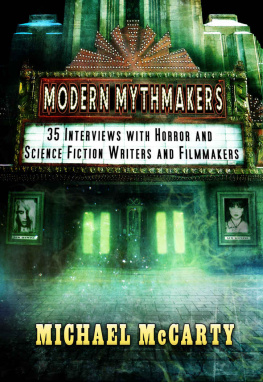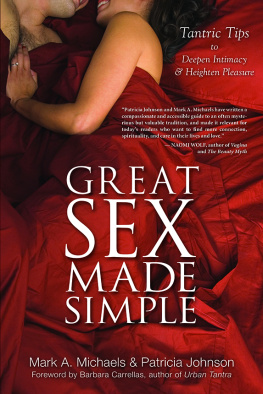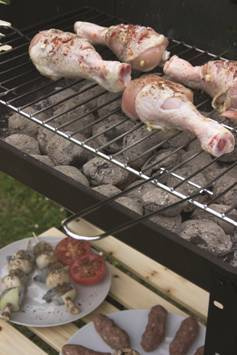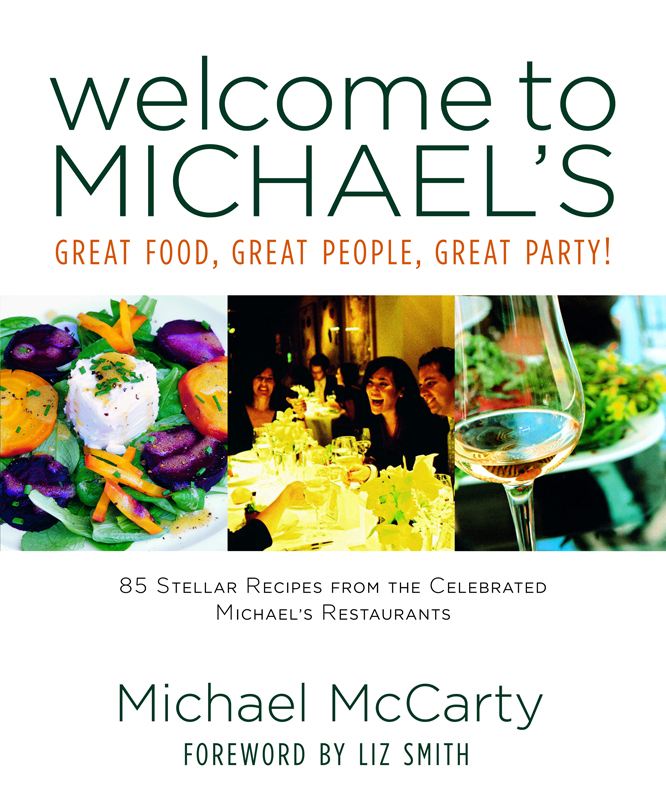Copyright 2007 by Michael McCarty
Foreword copyright 2007 by Liz Smith
All photographs copyright 2007 by Stephen Pool, except those on pages , which are courtesy of the author.
All rights reserved. Except as permitted under the U.S. Copyright Act of 1976, no part of this book may be reproduced, distributed, or transmitted in any form or by any means or stored in a database or retrieval system, without the prior written permission of the publisher.
Little, Brown and Company
Hachette Book Group
237 Park Avenue, New York, NY 10017
Visit our website atwww.HachetteBookGroup.com
www.twitter.com/littlebrown
First eBook Edition: June 2009
ISBN: 978-0-316-07654-8
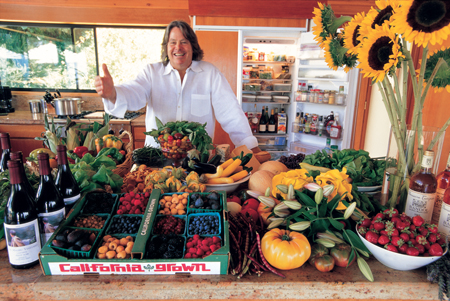
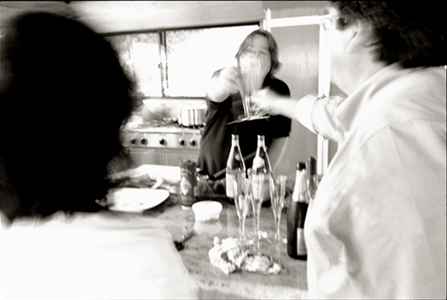
For Kim, Clancy, Chas,
and Blanche
and, of course,
in memory of my father,
J. T. McCarty
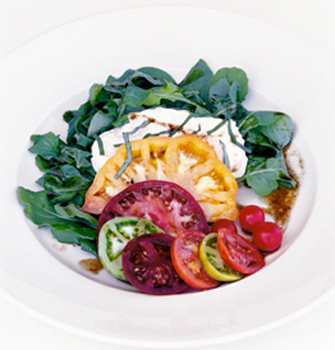
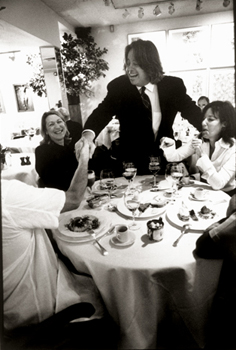


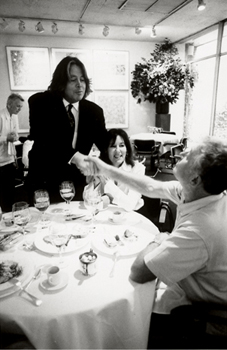
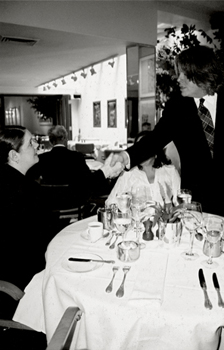
Michael working the floor in the garden room of Michaels New York
Like a lot of basically true things in life, nobody really quite knows why Michaels became the hangout of choice for the media and the book business. Everybody just wanted to go there, and it was fun to see more people whom you knew there than at any other restaurant.
The rise of Michaels was fabulous because it was a sincere happening. It wasnt engineered by a press agent. I asked the media executive Joe Armstrong, whos from Fort Worth like me and eats lunch at Michaels so often that he has a cowboy-boot vase on his table and is called The Mayor of Michaels, if hes on the cuff or owns part of it. And Joe just laughed, because he isnt and he doesnt.
I like and appreciate the fact that Michaels somehow created its own ambience. Im sure a lot of hard work and planning went into it, and Michael himself and his general manager, Steve Millington, have great senses of humor. The wonderful thing about Michaels is that its an authentic place to go to eat and see people. It reminds me of how people used to congregate at the Stork Club or at the Algonquin in the old days.
Let me give you an example, which I wrote about in my column in the New York Post on March 28, 2002:
Joe Armstrong had decided to invite an interesting group of people he liked to have lunch with him at Michaels. There was Robin Williams and his wife, Marsha, and former president Bill Clinton, and former Texas governor Ann Richards, and Billy Crystal and his wife, Janice, and the newswoman Diane Sawyer, and me. It was a grand get-together. I remember that while we were talking, a waiter went by with one of those big plates of French fries they serve at Michaels, and Bill Clinton said, Hey, well have one of those. That was before Clinton had his heart surgery.
At some point, we all got up for a private group picture. A photographer happened to be out in front. Through the round window, she saw us all standing and ran in and snapped a picture. And that photo went around the world.
Its the sort of thing that just happens at Michaels. It was a real, true thing. And it rebounded to the restaurants credit.
Thats why I like to think of Michaels as the most exciting manifestation youll find today of Manhattan as a small town.
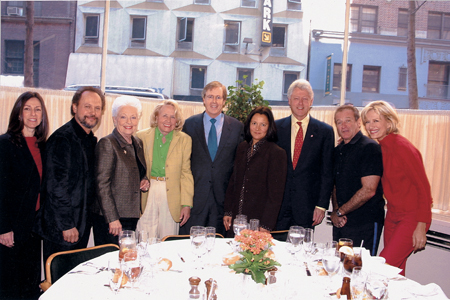
FROM LEFT : Janice Crystal, Billy Crystal, Ann Richards, Liz Smith, Joe Armstrong, Marsha Williams, Bill Clinton, Robin Williams, and Diane Sawyer
Photo credit: Jimi Celeste/PMc

Me and my man!
it has been and still is
a great party
For as long as I can remember, I have loved a party, and there is no better party than a great restaurant alive with conversation, clinking glasses, smooth service, and delicious food. Youll notice that I always emphasize the whole experience. Thats because the most memorable meals are always complete and well-rounded: great food, great drinks, and great people in a great environment with impeccable service. I knew that I wanted to create just that kind of party atmosphere every night. Even at a very young age, I somehow also knew that I would have to build a strong foundation to allow myself the freedom to host a great party while also being confident that the food would be worthy.
It all started with my parents, John Thomas McCarty and Carol Holly McCarty Austell.
Michaels world-in-a-salad aestheticbright colors, strong flavors, rare and diverse ingredientsbecame more or less the lingua franca of American cooking. Michael McCarty, at the age of twenty-five, was the most visionary restaurateur in the United States.
JONATHAN GOLD, LOS ANGELES, 1997
Now, after two decades of rising decibels around the restaurant world, Michaels still soothes frazzled nerves as few establishments do. A meal with friends in the lush gardenamid tree ferns, orchids, and flowing streamsis Los Angeles at its most seductive.
CAROLINE BATES, GOURMET, 1998
Throughout my childhood, they and their group of friends entertained. Whether the setting was along the Hudson River, where I grew up, or the beaches of Rhode Island, where we spent summers, or the mountains of Vermont, where we skied in winter, a party was always happeningand it was always appropriate to the place, the season, the people, the local ingredients, and the occasion.
The restaurant bug really bit me in September 1969, the night before I left to attend a high school junior-year-abroad program in Brittany. My parents and my fathers best friend organized a send-off dinner for me at Laurent in midtown Manhattan. The place was designed to the nines, with spectacular beveled mirrors, mahogany woodwork, and perfect lighting. Everyone eating there looked like a million bucks: tan, fit, gorgeous, and beautifully dressed. The meal was sensational. But the highlight of the evening was when the owner, Laurent himself, entered the dining room. I could feel the buzz level soar. As he worked the floor, going from table to table, it hit me that something extraordinary was happening. Then the bill arrived. As I watched my father and his friend argue over who was going to pay, it all made sense. Every day of my life, I could throw the sort of parties my parents threwand get paid for it.



